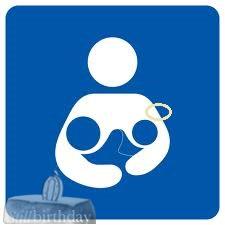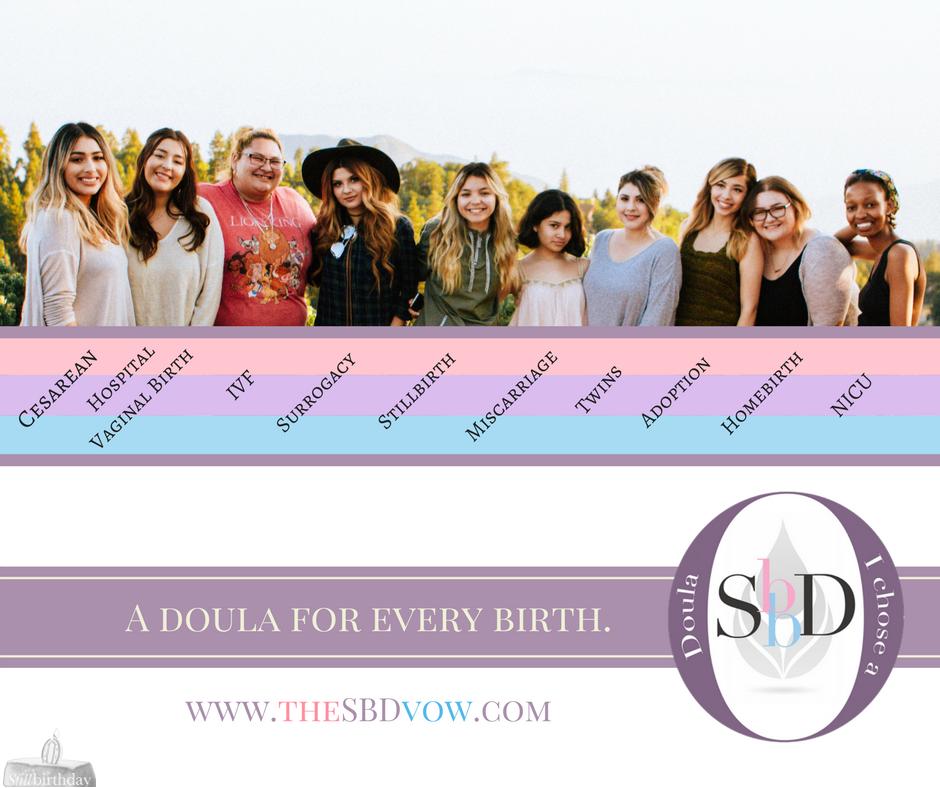[View more postpartum health information here.]
This is part 2 of 2 in Post Loss Lactation. Click here to view part 1, which includes stillbirthday support:
- lactation professionals specifically through stillbirthday, for milk decisions support
- discounts and freebies for items relating to expediting milk drying
- discounts and freebies for items relating to milk donation
This article regarding lactation after loss was written in large part by Kayce Pearson, a stillbirthday -mom and -doula serving in Utah. There is also information specifically regarding nursing your newborn with an adverse or fatal diagnosis (difficult diagnosis birth plan), or nursing your live twin if one of your twins has died (twins birth plan), and that information has also been donated by a stillbirthday mother and mentor.
Related: Stillbirthday Rainbow Milk campaign
Kayce writes:
***This has to be the mother’s choice. Pumping after loss can just bring back memories of the loss and the baby they lost since this milk was meant to nourish them. Asking if they want to is a good idea, but please respect their wishes and help them with information on how to dry up their milk if that is what they want (information about this below)***
After birth, whether the baby was term or in the second trimester, there is a very sudden drop in hormones. This results after the placenta has come off the wall of the uterus, since the placenta is what regulates and creates most of the hormones in pregnancy. This sudden drop in hormones is what signals the body to create breastmilk, whether there is stimulation to the breasts or not after birth.
About Post Loss Lactation
For the majority of mothers, a loss after 20 weeks will result in the creation of breastmilk a few days after birth. There are some that won’t make milk until later and some that will have milk from a much earlier loss. You may want help eliminating your milk supply, since it is a daily reminder of the loss, but pumping can be such a healing encouragement that your body is not broken, and that you are creating a gift. Some mothers find validation in the idea that the breast is crying. Additionally, if you are currently breastfeeding an infant or toddler, feeling a surge of breastmilk after pregnancy and infant loss can have a mix of feelings.Studies explored in the stillbirthday birth & bereavement doula training suggest that the hormonal process of lactation through pumping can buffer to some extent the deeper emotional impact of grief in the earliest days after loss.
Some tips for helping to dry milk quickly
FYI: Many mothers mistakenly believe breast binding to be the most efficient way of expediting the milk drying process.
Rather than binding breasts (which is painful and largely counter-effective), consider binding the mother’s womb instead.Learn more about an ancient custom called Mother Roasting and more in our Blessingway information. We include this Womb Wrapping ceremony during our Mothers Workshops.
• Do not bind off the breasts. This can cause clogged ducts and can lead to infection and mastitis. This includes tight bras like sports bras or tight tank tops.
• One of the best natural remedies is cabbage leaves in the bra. Just take regular cabbage leaves, either the entire leaf or cut since it needs to fit over most of the breast, and fit it in the bra. Make sure that if the entire leaf doesn’t cover, put some on both sides of the breast. This will evenly decrease the milk supply without causing clogged ducts or any other issues. If this is done around the clock, most see a huge decrease within a couple days. Change out the leaves twice a day for the best effect. [preparing the leaves by cutting off the biggest veiny sections, and then placing them in freezer bags in the freezer, and changing them out once they become warm and soggy, can provide relief from the physical pain of engorgement as well as helping to dry the milk quickly.]
-
Ice can be your best friend. When decreasing supply, engorgement can happen. Using ice doesn’t stimulate supply, and it helps take the edge off any pain they can be experiencing. Earth Mama Angel Baby makes Booby Tubes, which are great for this. They can be frozen or heated, and curl around the breast so all the sore parts are covered.
-
Earth Mama Angel Baby also makes No More Milk tea. Peppermint and sage also can help lower breastmilk supply.
-
Try not to stimulate the breasts at all. Any stimulation, such as rubbing in the shower, can signal the breasts to make more milk. However, if the breast is really engorged, hand expressing until comfortable can really help, as long as it isn’t done every few hours.
Options with Milk
-
Breastmilk Keepsakes (scroll down a bit to see the jewelry on the right sidebar)
-
The use of droplets of breastmilk to include in your farewell celebration of your child. This might include drippling into a tear bottle, a special nursing bra, a precious hankerchief, or a love letter to your baby, that you then might burn or place into a stream. These options are as many and as individual as you and your bereavement journey.
-
Milk Donation (see below)
Mothering Magazine/Huddler own the patent on the original Universal Breastfeeding Symbol – we wanted to create something similar that honors mothers who have endured post-loss lactation and:
-
share milk with a surviving multiple
-
share milk with a surviving older sibling
-
share milk with other babies, either through pumping or direct wetnursing
-
became pregnant with a subsequent baby, who they are nursing, and by so doing, facing a new facet of the grief journey as they mourn that breastfeeding relationship lost with their baby who is not alive
- and so stillbirthday has exclusive permission to the photo graphic above. You are free to use it on your own social media or other ways of expressing your journey.
Some Tips For Milk Production/Pumping
Getting Started
- know the options for donating, including legalities and fine print (outside link).
- understand that the desire to donate alone doesn’t make it happen. Sometimes even if there is milk, it is not enough or the mother’s body doesn’t respond very well to pumping.
- discuss with your provider about the possibility of a discounted hospital pump rental.
- purchase or rent a pump.
- purchase comfortable nursing bras.
- purchase breastmilk storage bags.
- learn how to exclusively pump (including storage, hand expression, cleaning tools, and more).
- create a word file within a tag or business card template as explained below for easier labeling.
- keep receipts for your purchases as they may be needed in your donating arrangement.
- get support from your loved ones.
If you want to pump and save or donate you milk, you will need support. It can be very hard to find the strength to keep going, but your support can help you go for as long as you would like to.
KEY TIPS: To keep an adequate supply, so you will be able to continue pumping for as long as you want to, pumping at least 8-12 times a day is necessary. Pumping every 2-3 hours will keep your supply up. Pump for up to 15 minutes on each side – do not pump endlessly even with small amounts of milk as this can fatigue the breast and actually dry the milk. You may hold near to you, baby lotion or another scent, or an item that belongs to baby, to help with “let-down”. Household support by friends, and awareness for you to give validation to your spouse in other ways (such as listening, hand holding) can soften the sense of guilt which may accompany the spouse’s desire for you to stop pumping.
• Find a bra that fits. Once you start to pump, get a fitting to see what size nursing bra will fit.
Most maternity stores will size women, but if you don’t want to go into a store with pregnant women and newborns, you can look up how to size it yourself online or you can ask for help from your doula if you’re is comfortable with it. Another great option is nursing tanks or tank tops. They will keep nursing pads in place, and make it easy to pump yet give support.
• Look into a hands-free pumping bra. Here is one brand. These are invaluable. When pumping exclusively, mothers are stuck to a pump for hours a day, and holding the pump in place gets exhausting, especially since pumping is pretty boring. A hands-free bra will let you pump, but also let you read or work while doing it. To go along with this, pumping makes you lean over into an unnatural position, and there are flanges (Pumpin’ Pal) that go in the pump to lean the pump over while letting the mother relax.
• A good pump really helps ease the workload. If you would like to do this for longer than a month or two, you will need a pump that has the motor to sustain exclusive pumping. All hospital grade pumps will do this, though they are expensive. The Medela pumps aren’t a closed pumping system so they aren’t to be used for more than one person, but they are a good option. Hygeia pumps are the best pumps out there, and their professional grade pump are almost as powerful as hospital grade pumps for much cheaper. Ameda also has some amazing pumps to use.
• Drink a lot of water. Just the same as if you were nursing, you will need to drink water throughout the day to maintain her supply.
• Eat enough calories to stay healthy. One good rule of thumb is to eat 100 extra calories per 10 ounces pumped per day.
Pumping & Donating:
• When storing milk, place the milk in whichever storage bag you have, and lie flat in your freezer until frozen. This takes up much less room in the freezer, so you can store more milk and it is much easier to transport. With some milk sharing arrangements, knowing on what day the milk was expressed is needed.
It might be simpler to create a word file with a tag or business card template that you can print multiple times, to include the following on each tag:
Your name, day that your baby was born, at what week gestation he or she was born at, and a simple blank space or line for you to write on the date you expressed that batch of milk.
If donating, find someone to donate to once you have a supply or milk stored. There are many places to look for families to donate to. Eats on Feets and Human Milk 4 Human Babies are communities run through facebook, and you can just do a facebook search to find the chapter closest to you. These are both direct donation communities, so the donation is completely up to the families involved. Most should cover any expenses you had, such as storage bags or shipping.
• It may take a few days for the supply to rise, since the body wasn’t prepared to make milk as early as it did. One way to increase supply is power pumping. This is more time consuming than pumping, but it works really well. When pumping, you pump for 5-10 minutes, then take a 5-10 minute break. Continue this for about an hour to an hour and a half, even if nothing else is coming out of the breast. The stimulation, even if nothing is coming out, will increase the supply. You can do this multiple times a day to increase it faster, but it is time consuming.
Mother’s Milk is an herbal tea traditionally used to increase breastmilk production.
• Make sure that the flanges fit the breast. A lot of women don’t have the average nipples and breasts required to fit the standard flanges (horns) on the breast pump. Lactation Innovation http://bit.ly/pZCCAS is a great resource to see if the flanges are the right size. If they are too big or small they can cause a lot of pain while pumping, clogged ducts, uneven emptying of the breast, and other issues. Correct flanges will help pumping be much less stressful.
You will need support people, particularly a birth & bereavement doula, to be there, to check on you. It isn’t easy to keep pumping, and there will be hard days when you may need someone to remind you why you started doing this. The benefits of breastmilk are endless, but after loss, it isn’t that easy to remember why you started.
If you donate your milk, the first time you drop off milk or milk is picked up can be hard. Your friends or a doula can ask if you will need them there, just for support. It is your baby’s legacy and a wonderful thing for you to do, but it was also to be your own baby’s nourishment.
If you ever have any questions, please do not hesitate to contact any of our birth & bereavement doulas, or our lactation professionals. Kayce Pearson pumped after her second trimester loss for two months, donated over 1000 ounces to three families, and encountered a lot of problems along the way, from clogged ducts to issues wanting to continue. Anytime you need help, you can send her a direct email. Kayce Pearson heartsandhandsservices@gmail.com
Your loved ones will also need to provide support to you. They can:
- bring or prepare meals for you.
- help with some of your basic household chores (laundry, for example).
- help run errands for you.
- not expect you to “host” or “entertain” them.
- visit our “friends/family” section for more helpful ideas.
- encourage you that you are making the right choice for your needs.
- remember that you are a new mom, which comes with a lot of needs, as well as a grieving mom, which also comes with a lot of needs.
Additional Information:
This section is borrowed from “Expressing Breast Milk“written and revised by Edith Kernerman, IBCLC, and Jack Newman MD, FRCPC, IBCLC, and edited only to be appropriate for stillbirthday.
- Obviously, if you can pump or express a lot of milk, you are producing a lot; however, if you cannot pump or express a lot, this does not mean your milk production is low or inadequate. Do not pump to find out how much you are producing. This is not a good way to judge milk supply.
- The most effective pumps are high-powered, double, electric, and hospital-grade with adjustable pressure/suction and speed. There are many pumps on the market that are just not very good. Some hand pumps are adequate for occasional pumping.
- Hand expression can be very effective and certainly is the least expensive. See below.
- Improper use of a breast pump can lead to problems. Read all instructions thoroughly. Make sure you get a demonstration and instructions from the person who is renting or selling you the pump.
Pumping Method:
- Wash your hands
- Place your nipple in the center of the flange (when your baby is breastfeeding, it is best that your baby be latched on “off-centre” or “asymmetrically” with your nipple pointed toward the roof of baby’s mouth (see the information sheet When Latching and the video clips.
- Put the pump on the lowest setting that extracts milk, not the highest setting you can tolerate.
- Pump for a maximum of 15 minutes each side. If breasts run “dry” before 15 minutes is up, pump until dry then add 2 minutes. Compression can be used when pumping as well and increases the amount you can pump. See the information sheet Breast Compression.
- Remember, pumping should not hurt. If it hurts:
- Lower the suction setting
- Ensure the nipple is centered in the flange
- Pump for a shorter period of time
Cleaning the Pump:
- All pumping equipment should be sterilized before first usage, thereafter it only requires washing with hot, soapy, water or by dishwasher.
- After each pumping: either place the pumping kit (not the tubes or motor) in the refrigerator until the next pumping, or if not pumping the same day, hot-water wash and hot-water rinse well, then air dry.
- Remember to take apart all pieces of the pump for cleaning—including the smallest pieces, and to ensure that no milk has clumped in the flange shaft.
Hand Expression:
Many mothers find that hand expression is an efficient way to pump when only occasional expression is required. In fact, when colostrum is present and the milk production is not abundant (as normal in the first few days), it is often easier to get milk with hand expression than with a pump and many mothers find this the easiest way to express mature milk as well.
- Wash your hands
- Place thumb and index finger on either side of the nipple, about 3 to 5 cm (1-2 inches) back from the nipple.
- Press gently inward toward the rib cage
- Roll fingers together in a slight downward motion
- Repeat all around the nipple if desired
Encouraging the milk ejection reflex (MER) or “let down” reflex
The milk ejection reflex or “let down” reflex is the sudden rushing down of the milk. Milk will flow quickly even if you are not pumping at the time. Some mothers may feel thirsty, sweaty, sleepy, or dizzy during a milk ejection reflex. However, many mothers do not feel this milk ejection response ever in their whole lactating experience. You do not need to feel or be aware of the milk ejection reflex in order for there to be milk. Some women only become aware of it after the first few weeks while others feel it only at the beginning and no longer do after the first few weeks. This has absolutely no bearing on milk supply.
You can encourage the milk ejection reflex by thinking about having your baby in your arms or at your breast or having a picture of your baby to look at or keeping a piece of his clothing next to you.
You may feel the milk ejection reflex or notice your breasts leaking or you may not. You are likely to pump more milk faster if you pump both breasts at the same time. Breast compressions, while pumping, can be very effective at increasing the amount expressed, it may be a bit awkward at first, but it can be done (mothers have fixed the cups so that they sit inside the bra and then use compressions) or the partner can do it.
Sharing the Legacy of Milk
- Understand the pain medication options your providers might offer you and how these might interfere with your lactation options.
- Undergo a screening like at a Milk Bank.*
- Having a doula or friend with you, especially for your first drop-off is important, as well as having something tangible you might hold during the exchange.
About Milk Donation – Screening*
All donors to a HMBANA Milk Bank undergo a screening process that begins with a short telephone interview. Donor mothers must be:
- in good health
- not regularly on most medications or herbal supplements (with the exception of prenatal vitamins, human insulin, thyroid replacement hormones, nasal sprays, asthma inhalers, topical treatments, eye drops, progestin-only or low dose estrogen birth control products; for other exceptions, please contact a milk bank for more information).
- willing to undergo blood testing (at the milk bank’s expense)
- willing to donate at least 100 ounces of milk (some banks have a higher minimum)
You would not be a suitable donor if you:
- use illegal drugs
- smoke or use tobacco products
- have received a blood transfusion or blood products (except Rhogam) in the last 4 months
- have received an organ or tissue transplant in the last 12 months
- regularly have more than 2 ounces of alcohol per day
- have a positive blood test result for HIV, HTLV, hepatitis B or C, or syphilis
- or your sexual partner is at risk for HIV
- have been in the United Kingdom for more than 3 months (1980-96)
- have been in Europe for more than 5 years (1980-present)
Donated milk is heat processed (pasteurized) to remove potentially harmful bacteria and viruses.
Join the SBD Milk Sharing Map
If you are sharing your baby’s legacy of milk, if you are in need of breastmilk, or if you are a lactation support resource, you can list your information on our Milk Sharing Map.





